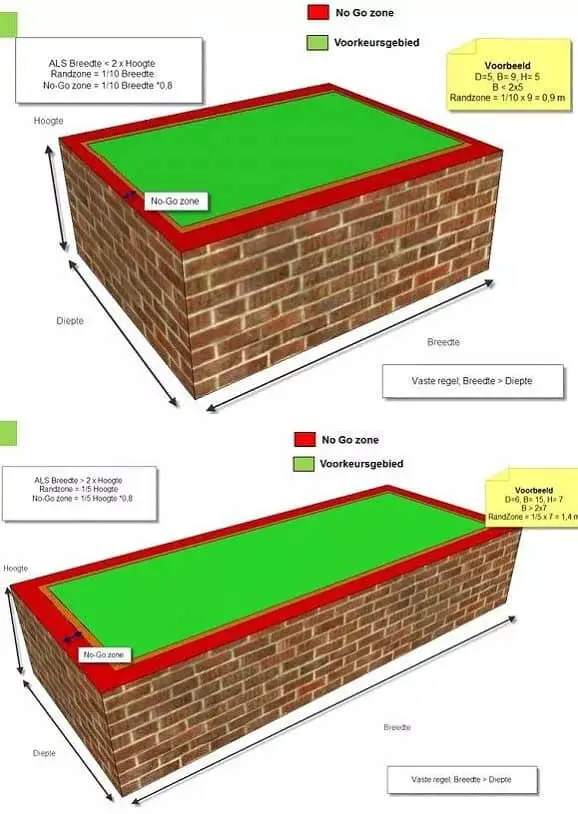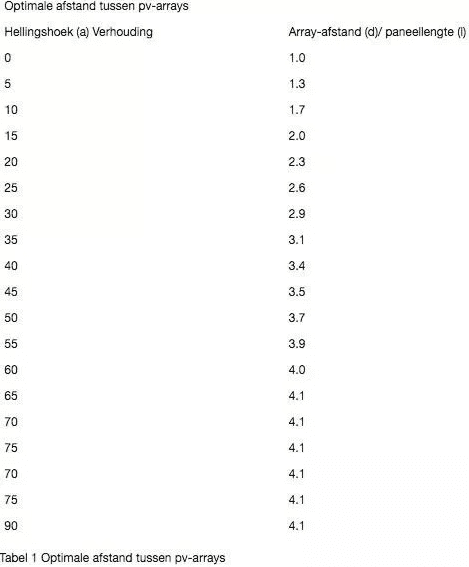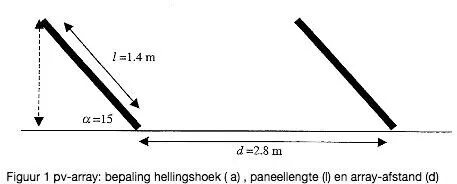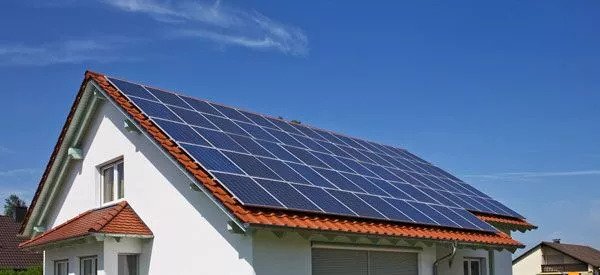How many solar panels do I need? This is one of the most frequently asked questions among our readers. Many step-by-step plans that you find on the internet to determine your choice regarding solar panels are incomplete. And the advice from installers is usually aimed at selling and installing as many solar panels as possible. In this article, we have therefore created an honest step-by-step plan to help you make the right choice. By going through a series of questions you will find out how many panels you need and which system suits your own situation.
Question 1: How much electricity do I want to generate myself?
First, check what your average energy consumption is. You can find this on the annual final bill from your energy supplier.
It is not profitable to generate more electricity than you consume. There are energy companies that do not set a limit on the return of electricity, such as Greenchoice, but most companies set a maximum.
So check this with your current supplier. If you want to generate more than the current energy supplier allows, it may be necessary to switch.
Question 2: How many solar panels do I need?
Now that you know how much electricity you want to generate, the next question arises: ‘How many solar panels do I need?’
How many panels you need depends on how much electricity you consume on average on an annual basis. Based on figures from Nibud, we now use the average consumption per person to calculate the number of panels.
See also our assumptions about average consumption. But of course, it is always good to look at your personal energy consumption.
A good installer can determine a fairly precise yield expectation for your roof. But for an initial estimate of the number of panels you need, you can use the following simple formula:
(annual power consumption x 1.15 ) divided by (the power of 1 panel in Watt peak).
Example:
- Your annual electricity consumption is 3000 kWh.
- Your supplier has solar panels of 290 Wp on offer.
- Of these, you need 3000 x 1.15 = 3450 divided by 290 = 11.9.
Because the yield of solar panels varies year on year and slowly declines, you could opt for 12 panels. You can check the annual productivity of a solar panel with the supplier.
You can find your annual energy consumption from your energy supplier: for example on your statement, or on your own account on the energy supplier’s website.
How many solar panels do I need? (per household)
1,825 kWh = 1 person
= 8-10 panels
2,860 kWh = 2 people
= 12 panels
2,860 kWh = 2 people
= 12 panels
3,400 kWh = 3 people
= 14 panels
3,400 kWh = 3 people
= 14 panels
3,930 kWh = 4 persons or
3,930 kWh = 2 people and a heat pump
= 16 panels
3,930 kWh = 4 persons or
3,930 kWh = 2 people and a heat pump
= 16 panels
6,430 kWh = 4 people and a heat pump
= 26 panels
6,430 kWh = 4 people and a heat pump
= 26 panels
Please note: keep in mind that the figures we provide here for energy production are also relative. The production of solar panels is measured in Watt Peak. (1 Wp is 0.85 kWh on average ).
How much kWH of actual energy this produces depends on the shade on your roof, but also your position in the country. In the west, there is generally slightly more sun than in the east.
Over the years, production can also decrease due to insufficient cleaning or wear and tear. On the other hand, the average Dutch person can also save half on their energy consumption through a number of smart interventions.
See also this page about saving energy at home. We have also looked at how many solar panels you would need if you were to add a heat pump.
Question 3: How large should the free group be in the meter cupboard?
You can always connect quantities up to 3680 Wp to the meter cupboard. If you choose to install a larger capacity, check whether you can add the desired capacity to a free group in the meter cupboard.
The options are determined by the size of your main connection. You can request this information about the main connection from the grid operator.
If the main connection is too small for your plans, choose fewer solar panels. Increasing the main connection entails higher fixed costs, which usually makes installing solar panels no longer interesting.
Question 4: How many panels fit on my roof?
Make a drawing with the correct dimensions of the most suitable (southern) roof surface. Scale 1:100 is a good scale.
Draw skylights, chimneys, and other obstacles in the right place. Then you can start puzzling with different types of solar panels.
Look at the dimensions of the different types of solar panels and determine which ones fit best on the roof surface, in the desired quantity. Take the following factors into account:
General:
- Preferably keep a distance of 1 meter from the edge of the roof on a flat roof. And keep a distance of half a meter from the eaves and ridge of a tiled roof. If this is not possible, it is necessary to use additional ballast (flat roof) or roof hooks (tiled roof).
- On a flat roof, keep a distance of 2.75x the height of obstacles to avoid shadows (e.g. with a 75 cm chimney you must keep a distance of 0.75×2.75= 2.06m to prevent shadows on the panels).
For a sloping tiled roof, proceed as follows:
- Determine how many panels can be placed per (horizontal) row. On a tiled roof, panels can be mounted on mounting rails either vertically (portrait) or horizontally (landscape). 20mm wide clamps are placed at the end of the rails and between the panels. Please take this into account when registering. (e.g. with 5 panels of 991mm in a row you do the following sum: 5×991+6×22= 5087mm). The mounting rails can be mounted both horizontally and vertically. However, if the rails run lengthwise behind the panels, additional material costs will be charged.
- Determine how many rows can be placed.
- Determine which type/size of solar panel will give you the ideal row setup.
Do the following with a flat roof:
- Determine the required distance to the roof edge according to the calculation rules in the drawing below. First, determine whether the building is cube-shaped or long and flat. Then do the sum to calculate the no-go zone.

- Determine how many panels can be placed per row. To prevent shadows from the rows of solar panels, the rows of solar panels must be a certain distance from each other. This distance depends on the angle of inclination at which you place the solar panels. You can choose from 25, 15, or 10 degrees. The smaller the angle, the closer together the rows can be and the more panels you can place. An angle of 15 degrees results in a 0-5% loss compared to 25 degrees. An angle of 10 degrees results in a 5-10% loss compared to 25 degrees.
- Use the table and drawing below to determine how many rows (arrays) can be placed.

Calculation example: a PV panel with a length of 1.4 meters, which is placed at an angle of inclination of 15°, must have a ratio between length and distance of 2.0 according to the table (see table 1). The optimal distance between the rows is therefore 2.0 * 1.4 = 2.8 meters. Please note, that the distance between the panel rows is measured between the bottoms of the relevant solar panels (see also Figure 1).
Figure 1 PV array: determination of inclination angle (a), panel length (l), and array distance (d)

- Determine which type/size of solar panel will give you the ideal row setup.
Question 5: Which inverter?
You have now received an answer to the question: ‘How many solar panels do I need?’ You also know which type of panel best suits your situation.
It’s time for the next step: choosing a suitable inverter. In order to extract as much electrical power as possible from a solar panel, the inverter continuously “searches” for the point at which the product of panel current and voltage is maximum. This is called the ‘Maximum Power Point’ (MPP).
The MPP shifts as soon as the irradiation or temperature of the panel changes. An inverter always has one or two MPP trackers.
All solar panels of the same type, which are located at the same angle and with the same wind direction, can be connected to 1 inverter.
If any of those factors differ, an additional inverter or an inverter with multiple MMP trackers is required. A simple inverter is generally sufficient and is the cheapest.
There are special inverters for panels where there is shadow, if you want to monitor wirelessly on your PC, and there are inverters that are quieter than the normal ones.
Step 6: Request a quote
With the information from the overview above you will be well prepared if you want to request quotes. You choose the best solar panel installation by comparing various well-rated companies.
To help you with this, we have a large number of solar panel companies based on reviews and the most important qualities of solar pole installers. Read the article about the best solar panel installation companies here.
Are you completely out of it? You can then also apply for a subsidy with the quotation.
- Get Tips & Trick daily

